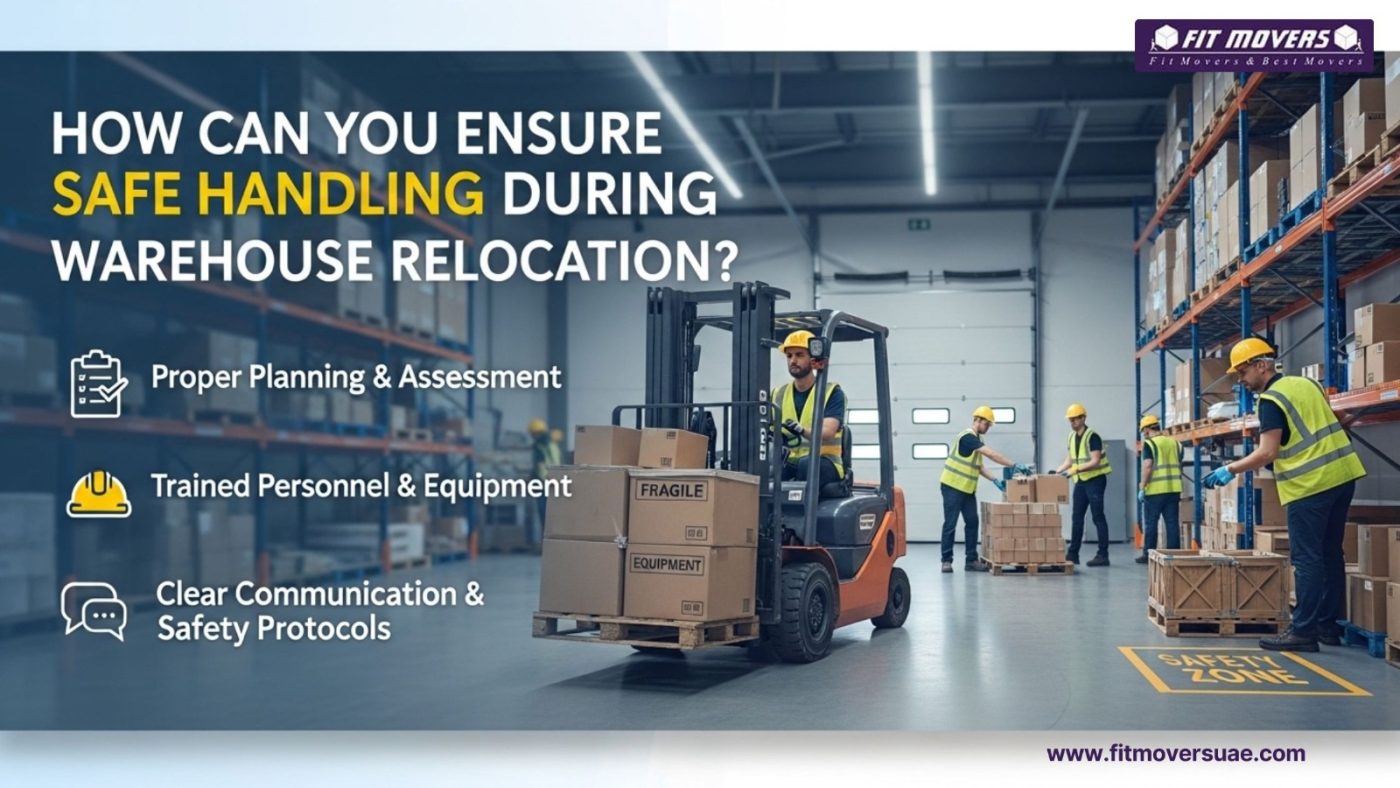How Can You Ensure Safe Handling During Warehouse Relocation?
A warehouse relocation requires detailed planning, organized execution, and strict safety measures. Moving a warehouse is different from moving household goods, since it involves large inventories, heavy equipment, and sensitive materials. If not managed properly, it can lead to damage, downtime, and unnecessary costs. One of the most critical aspects of warehouse relocation is safe goods handling. Whether you are shifting to a new storage facility or restructuring an existing one, ensuring product and equipment safety must always be the top priority.
In this blog, we will discuss practical strategies and best practices to ensure safe handling during warehouse relocation.
1. Conduct a Detailed Assessment Before the Move
Safe handling starts with proper planning. Begin by assessing the type of goods in your warehouse, fragile items, machinery, perishable goods, or high-value products. Each category requires a unique handling and packing method. Create an inventory list and mark items that need extra attention. You can allocate resources more effectively during this step and prevent confusion during the move by following these steps.
2. Train Your Team in Safe Handling Practices
Your workforce plays a vital role in safe handling during relocation. Provide them with proper training in lifting techniques, handling fragile items, and operating equipment such as forklifts or pallet jacks. Workers must also know safety protocols like wearing protective gear and following warehouse safety guidelines. A skilled team reduces accidents and product damage.
3. Use the Right Packing Materials
One of the most common reasons for damage during relocation is poor packing. To avoid this, invest in high-quality packing materials such as bubble wrap, shrink wrap, pallets, crates, and cushioning materials. Fragile and sensitive items should be packed separately with proper labelling. Heavy goods should be secured with straps or placed in sturdy containers to avoid shifting during transit.
4. Implement Proper Labelling and Documentation
Labelling is not just for organization. It is essential for safe handling. Every box or container should clearly indicate whether it contains fragile, hazardous, or heavy items. Labels like This Side Up or Handle with Care guide movers and reduce mishandling risk. Additionally, keeping inventory records helps track every item and ensures accountability during relocation.
5. Use Modern Equipment and Technology
Safe handling during warehouse relocation is easier when you use the right tools. Forklifts, pallet jacks, conveyor belts, and cranes can make lifting and moving heavy goods safer and more efficient. Additionally, warehouse management software helps keep track of inventory in the moment, ensuring nothing is lost or mishandled during the move.
6. Prioritize Safety Standards During Loading and Transport
Loading and transportation are critical stages where most accidents happen. To ensure safe handling,
- Balance the load properly to avoid tipping.
- Secure goods with straps or nets inside trucks.
- Avoid overloading to reduce accident risk.
- Ensure that vehicles are in good condition and operated by trained drivers.
Following these safety standards reduces risks during international transfers and guarantees goods reach their destination intact.
7. Plan for Fragile and Hazardous Materials Separately
Not all warehouse items can be handled the same way. Fragile goods require additional padding and careful handling, while hazardous materials may need special regulations. Always isolate these categories during packing and transport to avoid damage, contamination, or accidents.
8. Schedule the Relocation Strategically
Rushing relocations often lead to mishandling and mistakes. Instead, schedule the move during regular business hours to minimize disruptions. Phased relocation, where goods are moved in batches, can help maintain order and safety throughout the process.
9. Monitor and Supervise the Entire Process
Having supervisors or managers oversee the relocation ensures safety protocols are followed at every stage. The team can quickly address challenges, guide workers, and maintain accountability. Monitoring also ensures that fragile items are handled with extra care and that packing and loading follow a safety plan.
10. Perform Post-Relocation Safety Checks
Once the goods reach the new warehouse, inspect them thoroughly. Check for damages, missing items, or safety issues in the new setup. This final step ensures that your warehouse is ready for operations and confirms that the relocation was successful.
Conclusion
Safe handling during a warehouse relocation requires careful planning, trained staff, proper packing, and modern equipment. You can minimize risks, safeguard your goods, and ensure a smooth transition by following safety protocols and implementing strategic practices. Relocation is not just about moving items. You must do this in a timely, secure, and minimally disruptive manner to your business operations.

Comments:0